This pub is closed permanently. Your nearest Wetherspoon pubs: The Watch House and The London & Rye
This pub bears the name of one of England’s greatest astronomers. Edmund Halley, who gave his name to a now-famous comet, lies buried in St Margaret’s graveyard. Edmund Halley was born in 1656. His studies in astronomy and mathematics led him to be appointed a Fellow of the Royal Society, at the age of 22.
A framed passage about The Edmund Halley.
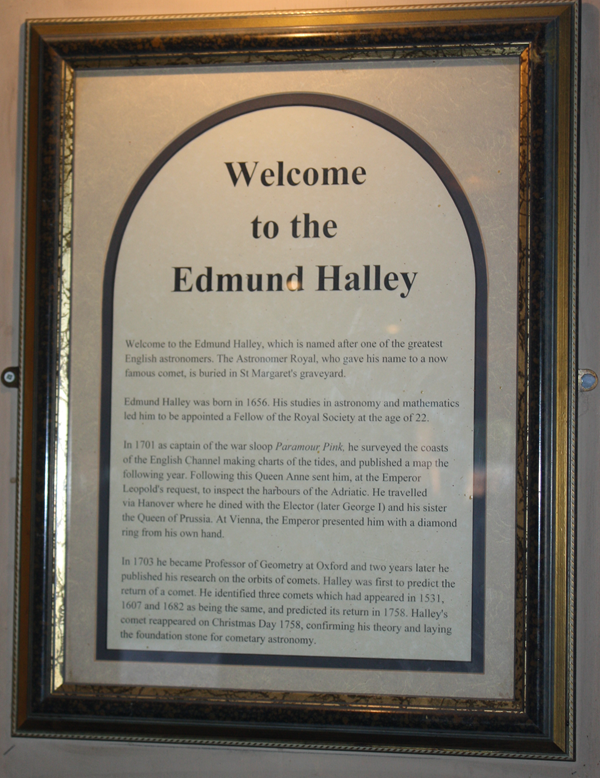
The text reads: Welcome to the Edmund Halley, which is named after one of the greatest English astronomers. The Astronomer Royal, who gave his name to a now famous comet, is buried in St Margaret's graveyard.
Edmund Halley was born in 1656. His studies in astronomy and mathematics
led him to be appointed a Fellow of the Royal Society at the age of 22.
In 1701 as captain of the war sloop Paramour Pink, he surveyed the coasts of the English Channel making charts of the tides, and published a map the following year. Following this Queen Anne sent him, at the Emperor Leopold's request, to inspect the harbours of the Adriatic. He travelled via Hanover where he dined with the Elector (later George I) and his sister the Queen of Prussia. At Vienna, the Emperor presented him with a diamond ring from his own hand.
In 1703 he became Professor of Geometry at Oxford and two years later he published his research on the orbits of comets. Halley was first to predict the return of a comet. He identified three comets which had appeared in 1531, 1607 and 1682 as being the same, and predicted its return in 1758. Halley's comet reappeared on Christmas Day 1758, confirming his theory and laying the foundation stone for cometary astronomy.
Framed photographs and text about transport in Lee Green.
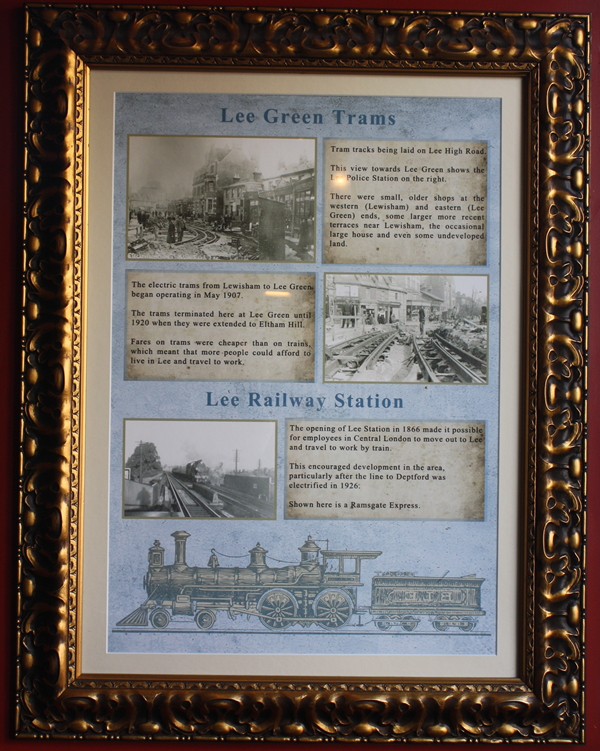
The text reads: Tram tracks being laid on Lee High Road.
This view towards Lee Green shows the Lee Police Station on the right.
There were small, older shops at the western (Lewisham) and eastern (Lee Green) ends, some larger more recent terraces near Lewisham, the occasional
large house and even some undeveloped land).
The electric trams from Lewisham to Lee Green
began operating in May 1907.
The trams terminated here at Lee Green until 1920 when they were extended to Eltham Hill.
Fares on trams were cheaper than on trains, which meant that more people could afford to live in Lee and travel to work.
The opening of Lee Station in 1866 made it possible
for employees in Central London to move out to Lee and travel to work by train.
This encouraged development in the area, particularly after the line to Deptford was electrified in 1926.
Shown here is a Ramsgate Express.
Framed photographs and text about Estelle Winwood.
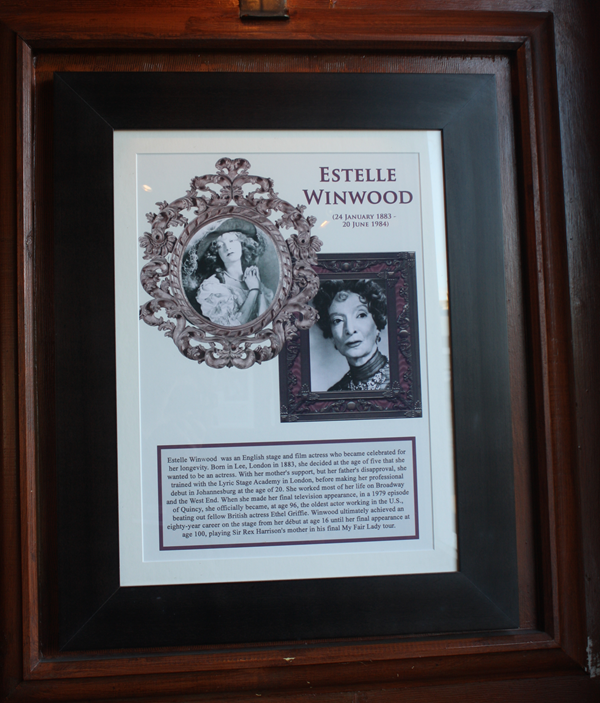
The text reads: Estelle Winwood was an English stage and film actress who became celebrated for her longevity. Born in Lee, London in 1883, she decided at the age of five that she wanted to be an actress. With her mother's support, but her father's disapproval, she trained with the Lyric Stage Academy in London, before making her professional debut in Johannesburg at the age of 20. She worked most of her life on Broadway and the West End. When she made her final television appearance, in a 1979 episode of Quincy, she officially became, at age 96, the oldest actor working in the U.S., beating out fellow British actress Ethel Griffie. Winwood ultimately achieved an eighty year career on the stage from her debut at age 16 until her final appearance at age 100, playing Sir Rex Harrison's mother in his final My Fair Lady tour.
A framed photograph and text about Karl Marx.
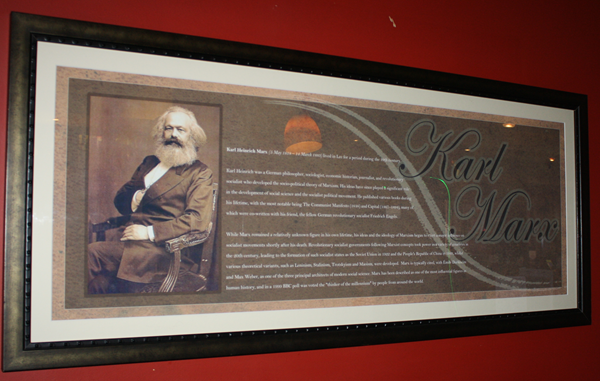
The text reads: Karl Heinrich Marx (5 May 1818 – 14 March 1883) lived in Lee for a period during the 19th century.
Karl Heinrich was a German philosopher, sociologist, economic historian, journalist, and revolutionary socialist who developed the socio-political theory of Marxism. His ideas have since played a significant role in the development of social science and the socialist political movement. He published various books during his lifetime, with the most notable being The Communist Manifesto (1818) and Capital (1867-1894), many of which were co-written with his friend, the fellow German revolutionary socialist Friedrich Engels.
While Marx remained a relatively unknown figure in his own lifetime, his ideas and the ideology of Marxism began to exert a major influence on socialist movements shortly after his death. Revolutionary socialist governments following Marxist concepts took power in a variety of countries in the 20th century, leading to the formation of such socialists states as the Soviet Union in 1922 and the People’s Republic of China in 1919, whilst various theoretical variants, such as Leninism, Stalinism, Trotskyism and Maoism, were developed. Marx is typically cited, with Emile Durkheim and Max Weber, as one of the three principal architects of modern social science. Marx has been described as one of the most influential figures in human history, and in a 1999 BBC poll way voted the “thinker of the millennium” by people from around the world.
Framed drawings and text about Robert Cocking and his fatal parachute descent.
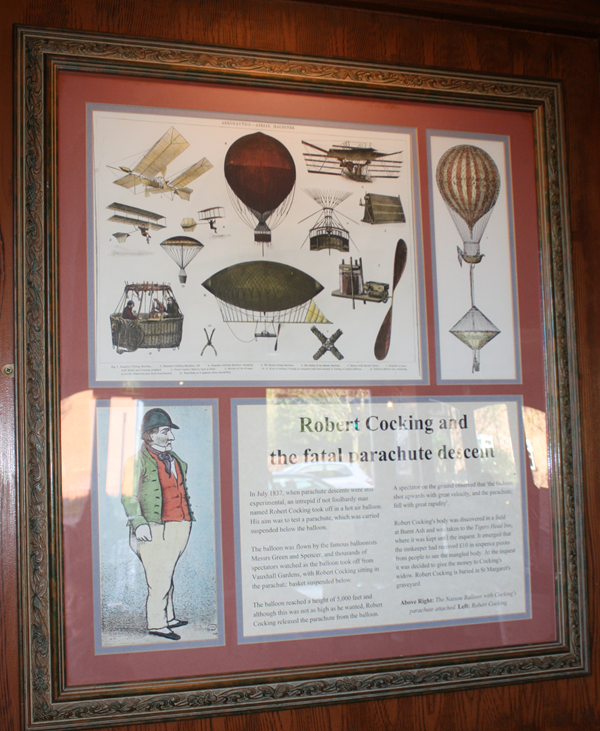
The text reads: In July 1837, when parachute descents were still experimental, an intrepid if not foolhardy man named Robert Cocking took off in a hot air balloon. He aim was to test a parachute, which was carried suspended below the balloon.
The balloon was flown by the famous balloonists Messrs Green and Spencer, and thousands of spectators watched as the balloon took off from Vauxhall Gardens, with Robert Cocking sitting in the parachute basket suspended below.
The balloon reached a height of 5,000 feet and although this was not as high as he wanted, Robert Cocking released the parachute from the balloon.
A spectator on the ground observed the ‘the balloon shot upwards with great velocity, and the parachute, fell with great rapidity’.
Robert Cocking’s body was discovered in a field at Burnt Ash and was taken to the Tigers Head Inn, where it was kept until the inquest. It emerged that the innkeeper had received £10 in sixpence pieces from people to see the mangled body. At the inquest it was decided to give the money to Cocking’s widow. Robert Cocking is buried in St Margaret’s graveyard.
Above Right: The Nassau Balloon with Cocking’s parachute attached
Left: Robert Cooking.
A framed drawing and text about St Margaret’s Church.
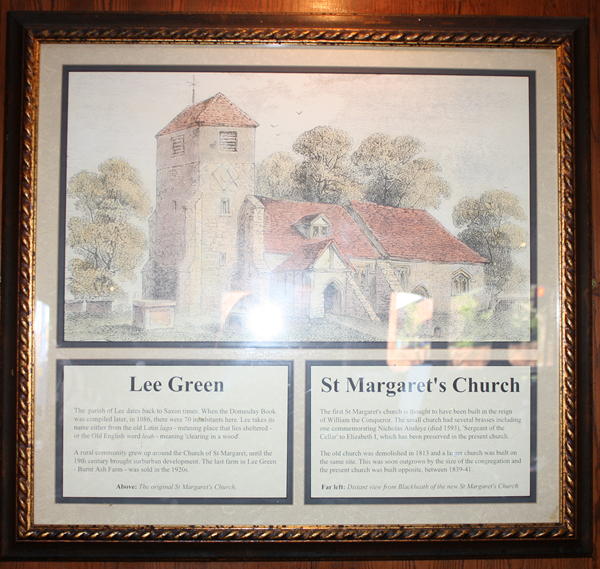
The text reads: The parish of Lee dates back to Saxon times. When the Domesday Book was compiled later, in 1086, there were 70 inhabitants here. Lee takes its name either from the old Latin laga - meaning place that lies sheltered - or the Old English word leah - meaning 'clearing in a wood.
A rural community grew up around the Church of St Margaret, until the
19th century brought suburban development. The last farm in Lee Green - Burnt Ash Farm - was sold in the 1920s.
Above: The original St Margaret's Church.
The first St Margaret's church is thought to have been built in the reign of William the Conqueror. The small church had several brasses including one commemorating Nicholas Ansleye (died 1593), 'Sergeant of The
Cellar’ to Elizabeth I, which has been preserved in the present church.
The old church was demolished in 1813 and a larger church was built on
the same site. This was soon outgrown by the size of the congregation and
the present church was built opposite, between 1839-41.
Far left: Distant view from Blackheath of the new St Margaret’s Church.
A framed photograph of Lee Green, c.1910.
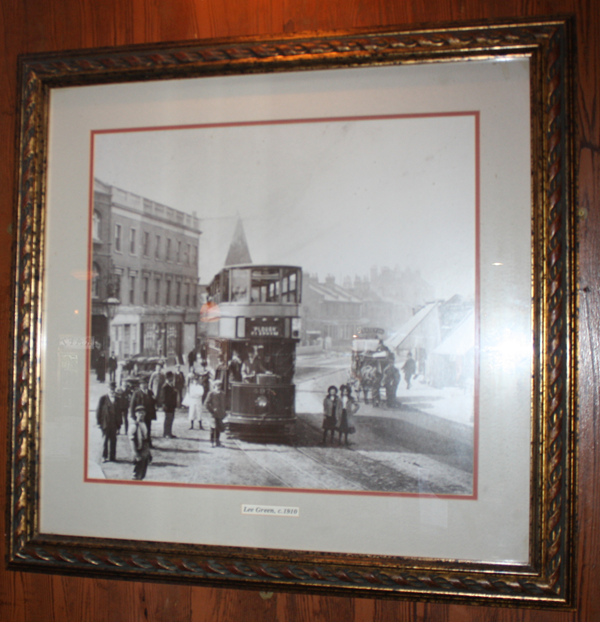
A framed photograph of Lee Green, c.1904.
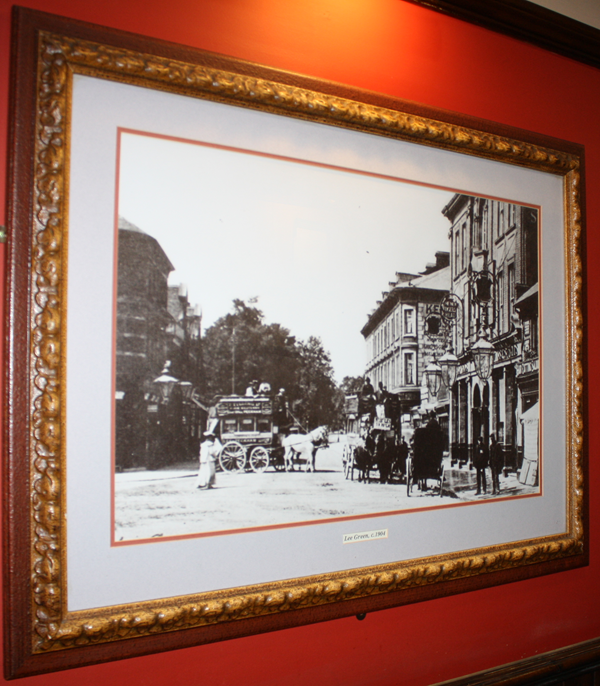
External photograph of the building – main entrance.
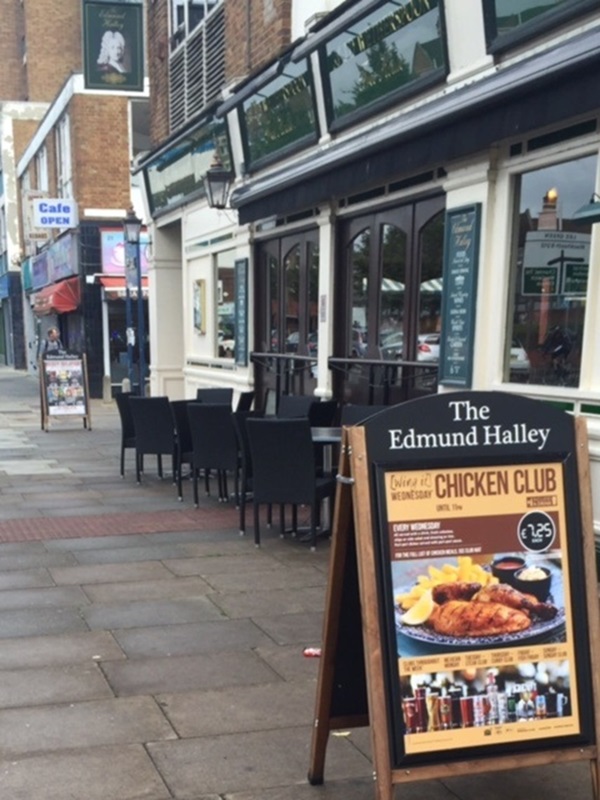
If you have information on the history of this pub, then we’d like you to share it with us. Please e-mail all information to: pubhistories@jdwetherspoon.co.uk